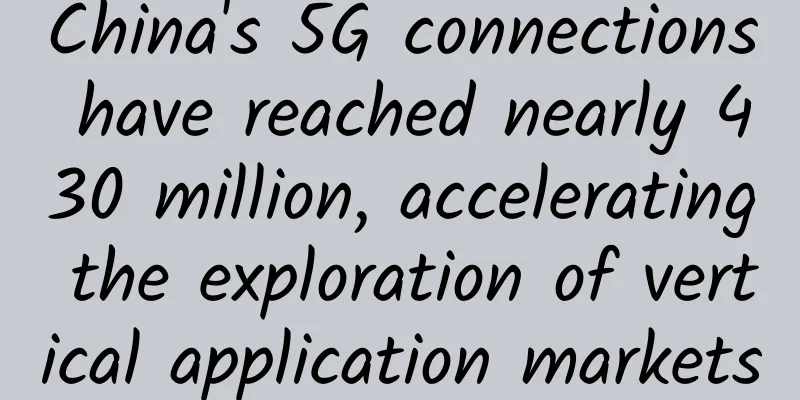China's 5G connections have reached nearly 430 million, accelerating the exploration of vertical application markets

|
By the end of 2021, nearly 8% of the world's consumer groups, or about 640 million users, will use 5G, and the operators' continued network construction will play a vital role.
Currently, the global 5G industry is still in a period of large-scale infrastructure investment. The latest data from GSMA shows that as of the end of the third quarter of 2021, the number of 5G networks in the world has grown to 176, and the number of 5G connections has reached about 550 million. Among them, China's 5G connections account for 78% of the world's total 5G connections, about 430 million. The number of 5G connections and users continues to grow. Recently, GSMA Greater China President Shan Shan told reporters that by the end of 2021, nearly 8% of the world's consumer groups, or about 640 million users, will use 5G, and the operators' continued network construction has played a vital role. 5G communication is the basic support for the birth of new applications. Si Han pointed out that the innovation of 5G and services has also added a lot of possibilities for the development of B2C. The development strategy of B2C in the 5G era will be reshaped, including cloud games, XR, ultra-high-definition video and e-sports. The ARPU (average revenue per user) value of 5G is currently 10% higher than that of 4G, which has also brought new business opportunities for new B2C businesses. The industry chain explores new modelsIn the 5G industry chain, companies are exploring new applications of 5G on the consumer and business side, among which operators play an important role. The GSMA think tank's report on global operator revenue, "Operators in the Digital Age: China Leads Revenue Growth," points out that in the new context of rapid global 5G deployment, the revenue structure of global operators has changed. In addition to traditional telecommunications revenue, the revenue brought by new services has increased significantly, and China has performed particularly well in revenue growth. Si Han analyzed that the revenue structure of operators is becoming increasingly diversified, and new services outside of traditional telecommunications business are more important than ever. Looking at the industry as a whole, in 2017, traditional telecommunications business including fixed-line, fixed-line, mobile SMS, voice, data, etc. accounted for as much as 82% of operators' revenue, while pay TV, and a series of B2C and B2B services, including OTT video, media and advertising, games, Internet of Things, cloud, security, business and financial services, smart home services, and new services such as vertical industry solutions, increased from 18% in 2017 to 24% in 2020, while traditional telecommunications business dropped to 76% in 2020. Judging from the financial reports of operators, China's three major operators, China Mobile, China Unicom, and China Telecom, doubled their revenue outside of traditional businesses in 2020 compared with 2017, reaching 230 billion yuan, of which the growth of B2B business was the main driving force. Cloud revenue increased sevenfold from 2017 to 2020, and logistics network and data revenues each doubled. 5G is an important catalyst and driving force. In a horizontal comparison, "among the 16 major global operators we surveyed, including those from the United States, Japan, South Korea, etc., in terms of overall performance, the revenue from non-traditional businesses should be between 15% and 40%. China is still below 20%, and SoftBank, which performed relatively well, has reached 40% to 41%. Chinese operators still have a lot of room and potential to move forward." said Si Han. At the same time, the cooperation between operators and chip manufacturers has become closer. Taking telecommunications and Intel as an example, Zhuang Binghan, vice president of Intel's sales and marketing department and general manager of Asia Pacific operator customer sales, said in an interview with reporters: "Intel and China Telecom have a long-term cooperation, starting from the earliest IT infrastructure construction to the promotion of virtualization and cloudification of telecommunications networks in recent years. There is a very natural evolution. Now we have also begun to increase cooperation with China Telecom Tianyi Cloud in public cloud. We believe this is also an important step in the transformation of operators." For Intel, which mainly focuses on CPUs, it has also increased its investment in AI, GPUs, and FPGAs in recent years to increase its computing power capabilities. Challenges of B-side BusinessAccording to GSMA, by the end of 2021, the 5G penetration rate in South Korea and China will exceed 30%, accounting for 32% and 30% of the total mobile connections respectively. It is expected that by 2025, the total number of 5G connections in China will reach 865 million, accounting for 40% of the total number of 5G connections in the world, and China's 5G penetration rate will exceed 50% (excluding IoT connection data). It can be seen that China is at the forefront of global 5G development, and currently there are more than 10,000 cases of 5G application innovation across the country. China also has many cases in cities. Liu Hong, technical general manager of GSMA Greater China, told reporters that 5G has five main applications in urban governance. For example, in transportation, 5G has been applied to public transportation, traffic diversion and management, and supervision of cargo transportation; in the field of emergency management and public safety, 5G can be applied to smart policing; in the ecological environment, it can be applied to ecological monitoring, garbage removal, pollution prevention, etc.; in people's livelihood services, there are smart communities and museum digitization; in digital government, it can be used to collect city brain data, conduct e-government and government affairs disclosure, etc. "If 5G can be widely used in these applications of urban governance, it will be conducive to the large-scale development of 5G industry applications, because the similarities between different cities are guaranteed to a certain extent. At the same time, it can enrich the application of 5G, reduce the prices of 5G modules and 5G terminals, and help 5G to move towards scale." Liu Hong said. At the same time, he also pointed out that in some B-side vertical scenarios, the combination of 5G and industry is challenging. Taking the industrial Internet as an example, "At present, if we want to achieve the organic combination of 5G and the industrial Internet, there is still some work to be done, including the need to screen rigid needs. Not all scenarios are suitable for 5G. These cases need to be screened by the waves. The second very important issue is the need to jointly formulate corresponding standards. The third issue is that the current application of 5G in the industry, the corresponding modules and terminals are still relatively small, which is also a key factor restricting the large-scale development of 5G industry applications." As we enter 2021, the application of 5G to B has attracted more and more attention. Overall, how to transform vertical applications from model houses into commercial houses and expand them on a large scale is the focus of the industry. Huawei's rotating chairman Hu Houkun previously said that industry standards are key to the large-scale replication of 5G to B. In China, operators have joined forces with the industry and partners to establish 5G application standards in industries such as coal mining, steel, and electricity. "In the past, the industry underestimated the difficulty of 5G to B, because it is not just a technical issue, but also a business model and ecosystem construction. As 5G has developed to this day, the industry has also underestimated the achievements that have been made, because the soft capabilities built through a lot of practice are becoming the long-term competitive advantage of the pioneers." He said. |
<<: The three major operators are accelerating their computing power
>>: 5G messaging: The key is how to divide the money
Recommend
Private wireless networks provide secure solutions for digital transformation
When many businesses first installed wireless IoT...
3 Reasons Your IoT Needs SD-WAN
We live in an era of fast-paced digital transform...
Blockchain: a panacea for wealth or deadly arsenic?
Blockchain has been talked about a lot recently. ...
This is the best answer I have ever heard about "TCP's three-way handshake and four-way breakup"
When it comes to TCP connection establishment and...
What is the difference between Industrial IoT and Consumer IoT?
Much has been written about the consumer Internet...
Meeting the Challenges of Multi-Cluster Kubernetes
[[441857]] 【51CTO.com Quick Translation】 As more ...
Everyone has seen the website 404 error. Do you know why it is 404?
Whenever a "404 error" appears when bro...
Five API Gateway Technology Selections, yyds
This article intends to discuss gateways around s...
5G is coming. China Mobile will incubate various vertical applications to realize the Internet of Everything
4G changes life, 5G changes society. At the 2016 ...
Huawei's Wu Hui: Join hands with partners to be the "bridge builders" and "road builders" of the intelligent era
Every generation has its own mission of transform...
China Unicom successfully returns to the forefront of 5G user development
[[389476]] After much anticipation, China Unicom ...
5G promotes the rapid development of smart healthcare
Recently, the Ministry of Industry and Informatio...
Ethernet vs. WiFi: A Comparison of Internet Connection Technologies
The world is generally moving from wired to wirel...
my country will start deploying and building IPv6 address projects in 2017
[[181003]] A reporter from the Economic Informati...
5G + Internet of Things: Providing development opportunities for the popularization of smart lamp poles
[[392057]] At present, the smart light pole indus...









